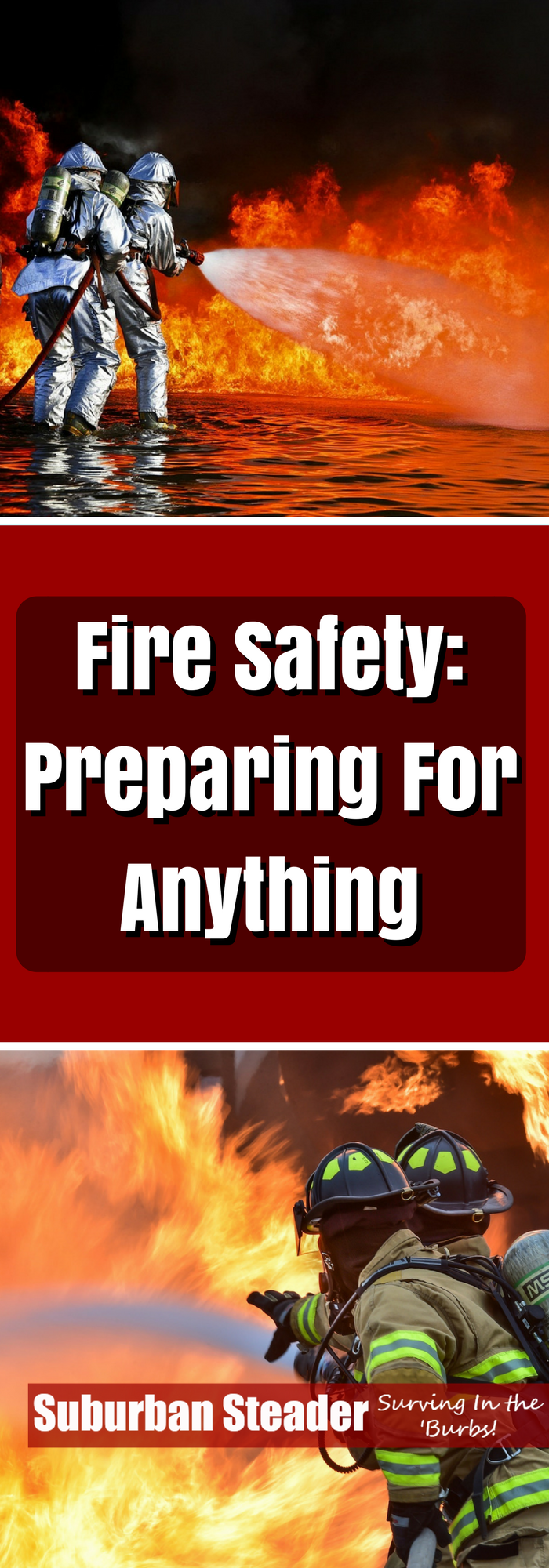Fire Safety – Preparing for Anything
There are over 1 million fires reported in the US every year according to the NFPA. These fires lead to about 15,000 injuries and 3,000 deaths. Given these numbers, fire safety is of utmost concern – especially in a SHTF scenario. Preparing for a fire and having the tools necessary to suppress the flames and evacuate can be essential to ensuring your survival.
Identifying Fire Risks
Steps should be taken to eliminate fire liabilities, however, trying to prevent the outbreak of fire is obviously preferred. Overcrowded electrical plugs, unattended candles, and faulty kitchen appliances are all examples of potential fire risks. You should make sure that you and your loved ones know how to minimize these risks. Keep in mind that, due to decorating your house, a lot of these risks are even more prevalent around the holidays.
Fires can start in all sorts of crazy ways in addition to the standard ones above. And they’re not always preventable. Some recent examples of odd fire starters include a Nutella jar next to a window, a cell phone overheating and a blender sparking flames.
While it is obviously best to practice fire prevention, it is crucial to have a plan and prepare for when a fire does break out.
Fire Safety Preparation
Preparing for fire safety involves three easy steps:
- Smoke Detectors
Anyone who takes preparedness seriously must make sure they have working smoke detectors throughout their home. Smoke detectors should be placed inside each bedroom, outside each sleeping area and on every level of the home including the basement. Alarms should also be placed in the living room, near the stairway to the upper level and, most importantly, in the kitchen. You should be checking your alarms once a month to make sure they’re still working According to FEMA. - Fire Extinguishers
Fires can get out of control in as little as 30 seconds. Preparing in advance by placing fire extinguishers in key areas of your home can prevent the spread of flames and possibly save your house. At the very minimum, it is best to keep a fire extinguisher in the kitchen, the laundry room, and the garage. These three locations are considered high-risk areas for fires. The general rule is that you want to have the extinguisher in your hand within 6 seconds of becoming aware of the fire. - Evacuation
It takes fire crews, on average, 10 minutes to arrive on-scene. That means that it will be up to you to make sure you get out safely. Preparing and practicing a fire safety escape plan is a great idea and it can be life-saving. One key component to any fire safety escape plan is that every room should have two safe exits even if it means using a window. First-floor windows should not have bars on them that cannot be opened in an emergency. Second- and third-floor rooms should have a fire ladder nearby. Make sure that it is tested and safe. Finally, if the room is several stories up, there are other alternate evacuation methods which will allow you to safely descend from your window.
Wrap Up
Overall, fire safety is an important issue for suburban homesteaders – and anyone with a preparedness mindset – to think about. Check on your plans, practice with your family and make sure you are not going to become a statistic.
